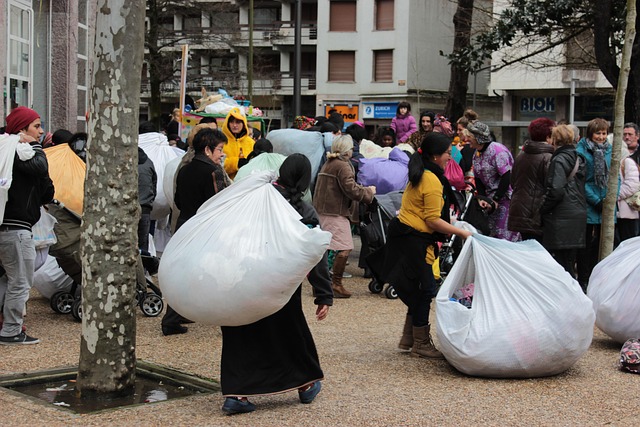Guerrilla Knitting: The Soft Revolution in Public Spaces
In a world of harsh concrete and cold steel, a quiet rebellion is unfolding. Yarn bombers, armed with needles and colorful threads, are transforming urban landscapes into vibrant canvases. This unconventional art form, known as guerrilla knitting or yarn bombing, is challenging perceptions of public spaces and redefining the boundaries of artistic expression. As cities become increasingly sterile, these fiber artists are injecting warmth, whimsy, and a touch of the unexpected into our daily lives.

The movement gained momentum as a form of protest against the coldness of urban environments and the commercialization of public spaces. Knitters and crocheters began adorning statues, wrapping tree trunks, and covering street furniture with colorful yarn creations. What started as isolated incidents soon blossomed into a widespread form of artistic expression and social commentary.
Beyond Grandma’s Sweaters: The Art of Yarn Bombing
Guerrilla knitting has evolved far beyond simple cozies and scarves. Today’s yarn bombers create intricate installations that range from small-scale embellishments to massive, building-spanning pieces. These fiber artists employ a variety of techniques, including knitting, crochet, weaving, and felting, to bring their visions to life.
The art form’s versatility allows for a wide range of subjects and styles. Some installations are purely decorative, transforming drab urban fixtures into eye-catching works of art. Others carry powerful messages, addressing social issues such as environmentalism, gender equality, and political activism. The ephemeral nature of yarn bombing adds to its allure, as pieces may last for days, weeks, or months before succumbing to the elements.
The Social Fabric of Guerrilla Knitting
One of the most compelling aspects of guerrilla knitting is its ability to foster community engagement. Yarn bombing projects often bring together diverse groups of people, from seasoned crafters to curious novices. These collaborative efforts not only result in larger, more ambitious installations but also create a sense of shared ownership and pride in public spaces.
Many cities have embraced yarn bombing as a form of civic engagement, organizing festivals and events that celebrate fiber arts in public spaces. These gatherings provide a platform for artists to showcase their skills and for communities to come together in creative expression. The inclusive nature of guerrilla knitting has also made it a popular tool for intergenerational bonding, with grandparents teaching younger generations the art of knitting and crochet.
Unraveling Controversies and Legal Tangles
Despite its generally positive reception, guerrilla knitting has not been without controversy. Critics argue that yarn bombing is a form of vandalism, albeit a soft and removable one. Some municipalities have grappled with how to regulate this unconventional art form, leading to debates about the line between public art and nuisance.
Legal issues have arisen in cases where yarn bombers have targeted private property or historic landmarks without permission. However, many cities have chosen to embrace guerrilla knitting as a form of temporary public art, recognizing its ability to enliven urban spaces and engage communities. Some local governments have even commissioned yarn bombing projects as part of their public art initiatives.
The Future of Fiber in Public Spaces
As guerrilla knitting continues to gain recognition in the art world, its future looks bright and colorful. Museums and galleries are increasingly featuring yarn bombing installations, legitimizing the medium as a form of contemporary art. This recognition has opened up new opportunities for fiber artists to push the boundaries of their craft and explore innovative techniques and materials.
The movement has also inspired a renewed interest in traditional fiber arts, with many young people taking up knitting and crochet as a form of creative expression and stress relief. This resurgence in handcrafts has led to a greater appreciation for the skill and artistry involved in textile creation.
Looking ahead, guerrilla knitting is poised to play an increasingly important role in discussions about public space, community engagement, and sustainable art practices. As cities seek ways to create more livable, vibrant urban environments, the soft revolution of yarn bombing offers a tactile and accessible solution. With each stitch, guerrilla knitters are weaving a new narrative for our shared spaces, one that values creativity, community, and the transformative power of art.





